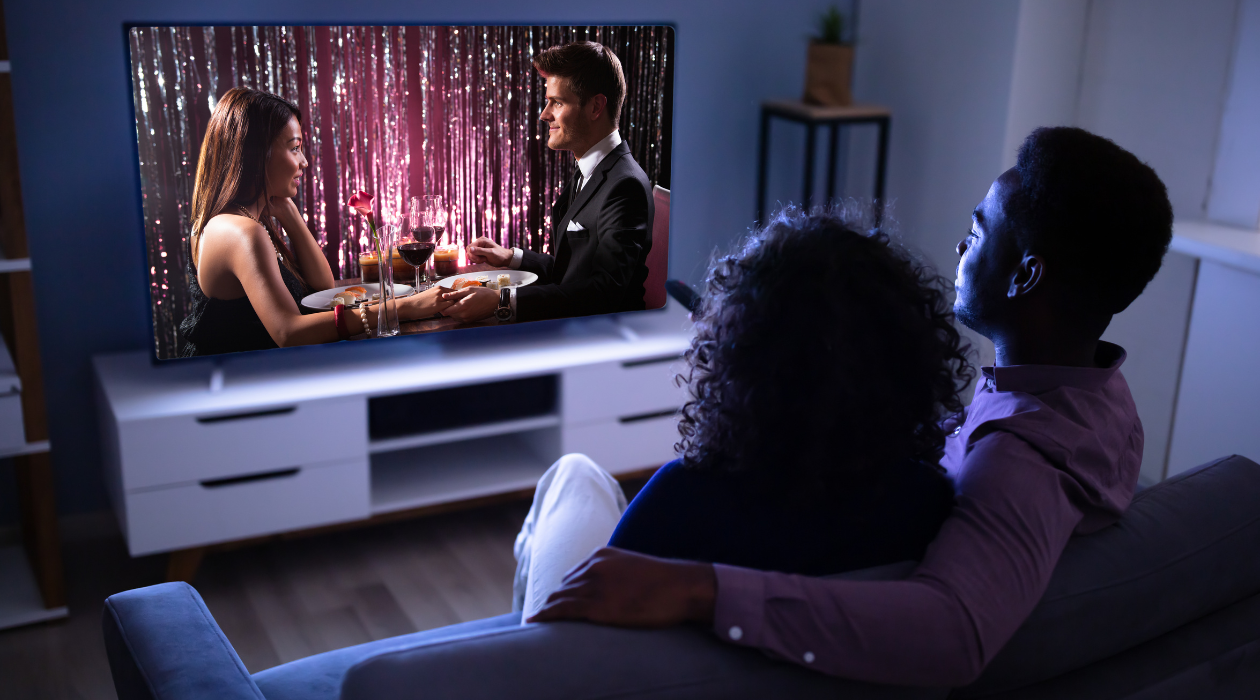TV Shines in a Time of COVID-19 Isolation

[Header image credit: Canva]
By: Melissa Fallon, SVP of Entertainment and Jen Cowan, VP of TV, Film, and OTT
The COVID-19 era has been marked by striking shifts in consumer viewing habits, particularly the accelerated adoption of streaming services and sharp increases in overall TV consumption, both linear and streaming. To be sure, these new behaviors are largely driven by temporary conditions—working from home, schooling at home, and no non-essential excursions. Media consumption will not remain this high as people resume their routines even partially. But some of the habits and preferences formed over this period will have lasting effects on the industry and its brand partners.
This global pandemic hit in the midst of a boom commonly referred to as “Peak TV.” Over the past decade, the number of scripted series more than doubled hitting 532 in 2019. While some speculated that this volume was approaching its peak, there were no signs of slowing down. Before COVID-19, there was a seemingly overwhelming amount of TV content and not enough time to check out all the cool shows that friends were recommending.
With more time on their hands, and a heightened need for distraction, viewers are now consuming more media and tapping deeper into streaming platform catalogues. Parents are also looking to occupy children during homeschool “recess” so they can take that next conference call. For them, Disney+ launched just in time. Almost all streaming platforms are offering free trials including Amazon Video, CBS All Access, HBO Go, Netflix, Hulu and the short-form newcomer, Quibi. In 2019 there was skepticism around how many subscription services consumers would tolerate, but the combination of COVID-19 and free trials may blow away original projections. They’re driving trial at a time when users are most likely to experience these services as a “need.”
Will it last?
It takes about two months for a new behavior to become automatic, according to science; and most Americans are nearing that threshold under “stay at home” orders. Of course, subscribers in financial pain due to COVID-19 are likely to audit and pare back their entertainment choices at some point. When that time comes, they could favor the streaming services over cable, especially if live sports don’t return soon, and especially if they find themselves newly hooked on a streaming show. Case in point: Ozark, the dark comedy from Netflix, tripled its season 2 premiere audience when its season 3 premiered in March.
But when will Hollywood reopen, and what will it look like?
With the exception of a few makeshift home productions largely from late night hosts, productions are all shut down, meaning almost no new content is being made for distribution. With a significant head start in the streaming game, Netflix is in a leadership position, as it has years of originals and some new releases in the can – Tiger King, Black AF, and Never Have I Ever, to name a few. Other platforms such as Peacock and HBO Max had their launch plans disrupted more significantly, but media companies are getting creative in their quest to be back in production with adjustments and precautions.
Hollywood is currently writing and stockpiling scripts with plans to start filming between July and September. Precautions will be taken for a healthy set, and all aspects of filming are being re-considered including makeup and wardrobe, craft services, location shoots, large crowds shots, and action scenes. Since social distancing and precautions may be part of life for months or years to come, studios are considering the pros and cons of showing pre-pandemic life such as crowded restaurant scenes which may feel too jarring. Netflix is considering purchasing warehouses to use for sound stages in a controlled setting and investing in technology and innovation – from green screens to digitally created visual effects—intended to fill gaps created by social distancing.
How can brands get involved and reach these isolated consumers?
Some of these streaming services are “ad free,” so getting involved means getting creative. And even on platforms that do allow ads, brands want to be sensitive to consumers, not tone-deaf in messaging. Consider the following.
- Creative Collaboration
- The producers of “The Office” are working on a new workplace comedy revolving around remote work. Technology partners such as Zoom have emerged as the solution leader in our current WFH situation, and could play an authentic role in the making of such a series as well as the on-screen story.
- Social Distance Solutions
- Meal delivery companies and QSRs can offer a single-serve alternative to production’s craft services through donations and/or studio contracts that can blend altruism with increased awareness and consideration in storyline inclusion.
- Product Placement & Brand Integration
- Brands are part of the natural fabric of life, and therefore, of storytelling. Consumers expect to see real products in their favorite characters’ lives. Brands have the opportunity to participate in the emotional journey of a consumer when their brand in placed in authentic environments.
- Promotional Partnership
- Instead of running standard creative, brands have the opportunity to partner with media companies to create co-branded promotional creative that allows a brand to emotionally engage around a thematically relevant launch. With increased content competition, studios are looking to creatively collaborate with brands through above-the-line and below-the-line media in order to get the word out.


